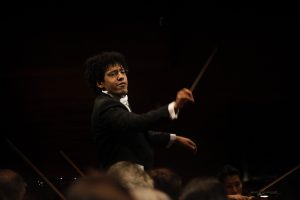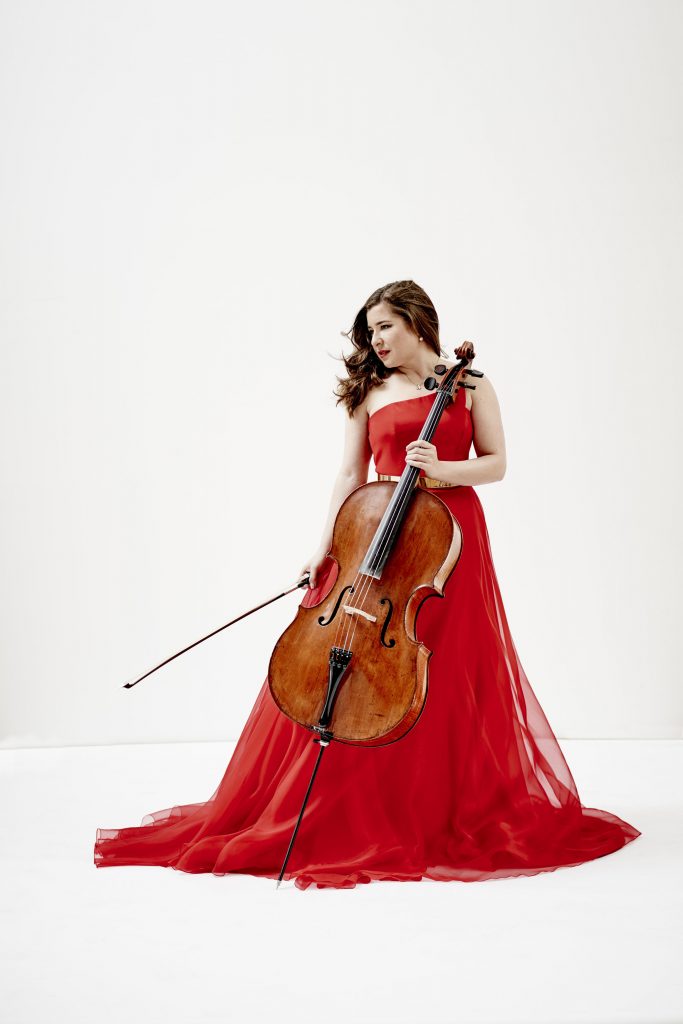The San Diego Symphony Performs Beethoven and Mozart Online from The Conrad in La Jolla
Not at all afraid of belaboring the obvious, the San Diego Symphony titled its Friday concert streamed on Facebook from The Conrad in La Jolla “The Return to Music.” Under Music Director Rafael Payare, some 20 musicians from the orchestra performed on the Baker-Baum Concert Hall stage—generously distanced, of course—taking full advantage of the hall’s vaunted, glowing acoustical halo.
During the exuberant opening movement of Beethoven’s Triple Concerto, the number of viewers on Facebook soared to over 600, 100 more than the Conrad can safely seat for a live concert, so it was a box-office success in terms of sheer numbers of listeners. The Symphony offered the concert without charge, however.

Rafael Payare [photo (c.) Bjorne Bertheussen]
Payare offered two undeservedly obscure shorter works, Jessie Montgomery’s “Banner” and George Walker’s “Lyric for Strings.” A kind of rhapsody on the National Anthem, “Banner” is, however, no lavish orchestration of the well-known tune, but a beautifully constructed tableau of short motifs that subtly allude to phrases of the anthem without actually quoting them. Montgomery’s thematic architecture is impressive, and the understated dramatic tension of this 10-minute work riveted the attention of this listener. In this piece, as in the Mozart Divertimento, Associate Concertmaster Wesley Precourt’s command and lustrous tone heightened the pleasure of the performance.
If Walker’s single movement for strings suggests an elegiac tone, it is by no means dark and brooding. Rather, its undulating, languorous, modal phrases suggest deep, serene reflection. It revisits the emotional landscape of Samuel Barber’s “Adagio for Strings” without all the baggage that great work has accumulated over the years. Black lives matter, and the works of African-American composers such as Montgomery and Walker deserve regular programming by North American orchestras.
Beethoven’s Triple Concerto reunited cellist Alisa Weilerstein and pianist Inon Barnatan—whose artistry and chemistry ignited this year’s La Jolla SummerFest—and also featured San Diego Symphony Concertmaster Jeff Thayer. Payare chose an arrangement of this large symphonic work for string quintet, wind quintet, and the three soloists. Not only did this adaptation fit the musicians’ distancing needs on the Baker-Baum stage; it also gave the Triple Concerto a transparency that transformed this at times ungainly concerto into exciting chamber music.

Alisa Weilerstein [photo (c.) Paul Stewart]
Payare unleashed the vivacious rhythms of the Rondo all polacca, providing a muscular, ebullient conclusion to the concert. And while it was indeed rewarding to take in this superbly prepared program online, it also served as a reminder of how much we miss experiencing the work of the orchestra in the flesh.

Ken Herman, a classically trained pianist and organist, has covered music for the San Diego Union, the Los Angeles Times’ San Diego Edition, and for sandiego.com. He has won numerous awards, including first place for Live Performance and Opera Reviews in the 2017, the 2018, and the 2019 Excellence in Journalism Awards competition held by the San Diego Press Club. A Chicago native, he came to San Diego to pursue a graduate degree and stayed.Read more…
